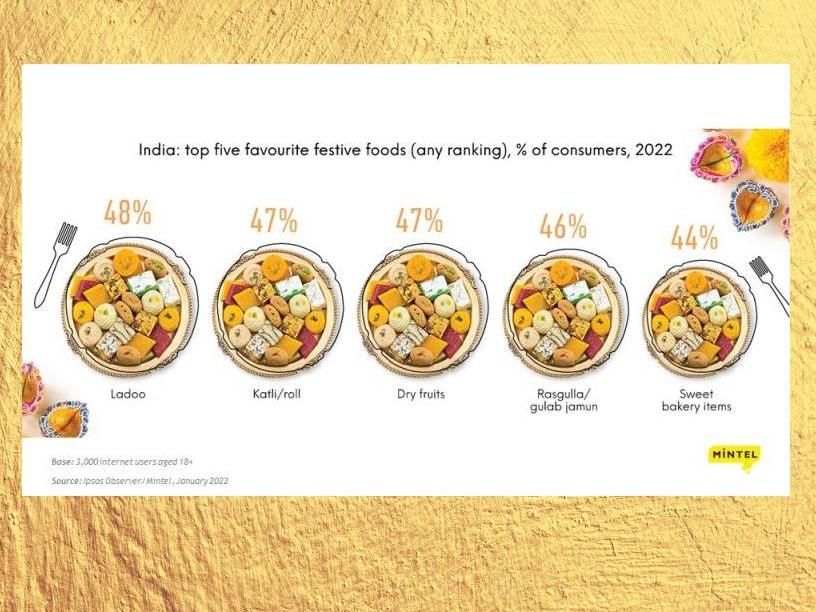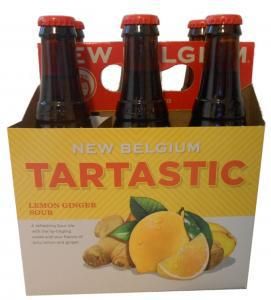Tradition dominates the festive food market but modern approaches are gaining popularity
Advertisement
With consumers gearing up to go back to pre-COVID-19 times, the packaged food and drink industry is eyeing a stronger festive season compared to the last two years.

Mintel
As explored in Mintel 2022 Global Consumer Trend Enjoyment Everywhere, consumers are proactively seeking joyful respites to combat the anxiety and stress caused by the global pandemic and the current economic uncertainties. Thus, consumers are looking forward to celebrating festivities like never before. They are eager to break out of their confines and explore, play and embrace novel experiences. This pent-up consumer demand to celebrate and enjoy life events show a positive trajectory for festive foods and drinks.
Consumption preferences for festive foods
Despite the cultural dominance of traditional sweets in the festive foods segment, modern food categories are finding increased relevance as favorable alternatives. Mintel research shows that traditional festive foods such as ladoo, kaju kalti/roll, dry fruits and rasgulla/gulab jamun dominate, but at the same time, modern food items like chocolate and sweet bakery are not far behind*.
Categories like bakery, snacks and chocolate confectionery have had the highest number of launches with ‘seasonal’ positioning claims over a five-year period between March 2017 and February 2022.
The preferences for these festive foods also vary by age group**. Dry fruit is the most preferred among Gen X (49%), chocolates for Younger Millennials (51%), while kaju kali/roll is most popular among Gen Z (50%).
Their preferences also give an insight into their unique wants. For example, in addition to dry fruits, among the top preferences for Gen X include ladoo and traditional homemade sweets. Their preferences lean more towards authentic traditional sweets with dry fruits that have a health halo and premium appeal. Therefore, brands can tailor their offerings and communication to target Gen X consumers by highlighting the authenticity of traditional sweets along with the health benefits associated with the premium quality of dry fruits.
In a category where taste and indulgence drive consumption, both traditional and modern foods, brands can take a targeted approach by exploring generational preferences.
Introduce fusion offerings
Indians are open to experimenting with festive foods. According to Mintel research, 36% of Indians find traditional flavours in non-traditional festive sweets appealing and 35% find modern twists in traditional festive sweets to be an attractive proposition. The fusion of traditional and modern can help engage these experimental consumers.
In their quest to target these experimental consumers, foodservice brands such as Fabelle Chocolates have introduced fusion festive offerings like the Rasmati Truffle and its Holi-inspired Fusion Collection. Brands like Theobroma Patisserie and Vanilla Beans are also utilising social media platforms to showcase fusion festive foods in a novel manner for various festivities.
Younger Millennials are also observed to be more receptive to chocolate as festive food. Brands can specifically target this demographic when looking to offer a modern twist to familiar traditional sweets.
Address consumers’ concerns over preservatives and sugar content
Traditional sweets are often made at home or bought from local mithaiwallas. Therefore, they are freshly made and free from preservatives with a shorter shelf life. On the flip side, traditional packaged sweets are perceived to contain preservatives, which is a major barrier for them to expanding their market in India.
To counter that, brands can offer products that are free from preservatives/additives. For instance, brands can use high barrier packaging and advanced technologies like modified atmospheric packaging to develop sweets that are preservative-free with a longer shelf life. This can help compete with modern sweets such as chocolates, snacks, snack bars and cookies. Strike a chord with consumers by adopting clean labeling and boldly communicating its preservative-free claim on its pack.
Indulgence is key to festive sweets, with sugar playing a pivotal role in offering that experience. However, health and wellness are on top of consumers’ minds. It is a conundrum for brands as sugar reduction can be perceived as a compromise in taste and indulgence.
Therefore, brands need to showcase the importance of adding permissibility to their healthy offerings. Natural sweeteners like jaggery and honey are familiar and known to have holistic health and wellness benefits. Brands can also focus on preventative health with low/reduced sugar for older or sugar-conscious consumers while also talking about its nutrient-rich ingredients and its corresponding functional health benefits. Claims like ‘made with 100% natural stevia’ can be well suited for diabetic-friendly products.
With these two factors in mind – offering modern and healthy twists to festive foods – consumers can enthusiastically look forward to festive celebrations this year and beyond.
*3,000 internet users aged 18+
**Gen X aged 41-56; Younger Millennials aged 25-31; and Gen Z aged 18-24


































































